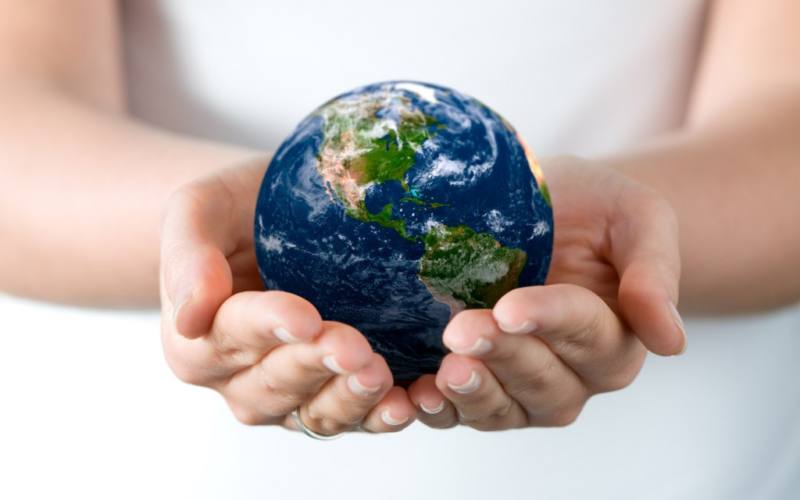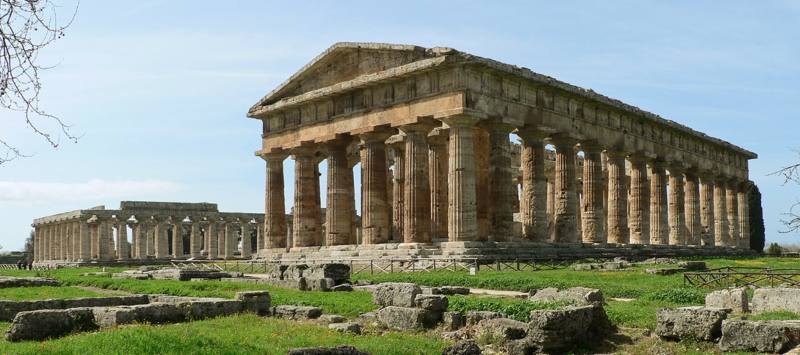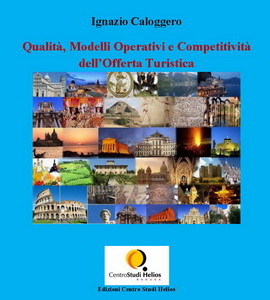Which Tourism for the Future?
Sustainable, Cultural and Experiential Tourism.
by Ignazio Caloggero

The article tries to clarify the meaning that is given to some types of tourism and examines some aspects relating to the forms of tourism that will characterize the near future: Sustainable, Cultural ed Experiential. A definition of "Experiential Tourism" is also given
Definitions
The origin of wisdom is the definition of terms
(Socrates)
As Socrates advises us, let's start with some definitions:
Tourism
Tourism is the complex of activities aimed at promoting and facilitating the transfer of tourists out of their residence and, subsequently, to receive them (Encyclopedia De Agostini).
Tourist
According to the definition of the World Tourism Organization, a tourist is anyone who travels to countries other than the one in which he has his habitual residence, outside his daily environment, for a period of at least one night but not more than one year, whose usual purpose is different from the exercise of any remunerated activity within the visited country.
Types of tourism
Below is an exemplary and non-exhaustive list of types of tourism:
- Sustainable
- Cultural
- Religious -
- Food and wine
- Experiential
- Induced by culture and historical or mythological events (see cinematographic and television places, literary places, places of myths, etc.)
- School
- Naturalistic
- sports(Eg. Golf courses)
- Congressional
- Bathing
- Spa and Wellness
- Accessible
Sometimes we also talk about integrated tourism:
Integrated tourism
The concept of integration in the case of the tourist offer can affect various aspects:
- Integration of services: Integration of services offered to tourists (catering, accommodation, assistance, transport, support services, etc.)
- Product integration: Integration of tourism products (natural, cultural, food and wine resources, etc.)
- Territorial integration: Integration of the tourist offer from the point of view of the territory (expansion of places to visit)
The Strategic Tourism Plan (PST) 2017/2022 focuses heavily on the integration of the tourism offer (Objective A). The first objective of the PST is in fact to activate a complementary, integrated and extended offer with respect to major destinations (such as major cities) and the main tourist products (such as bathing establishments, open air, congresses, thermal baths, food and wine) from which to start to get to know the enormous historical, artistic and landscape heritage widespread in the area. This will be done using what are considered strategic poles of strong tourist attraction (Unesco sites, great cities of art, centers of consolidated tourist attraction) as points of reference for identifying enlarged cultural and territorial contexts.
Therefore, the definition of Integrated Tourism can be given to any form of Tourism previously seen (Sustainable, Experiential, Naturalistic, Cultural, etc.) as long as at least one of the integration criteria is met: Integration of services, products, or territories.
Some insights into some of the types of tourism mentioned, in particular those that could have a strong expectation of growth.
Sustainable tourism

"Tourism has become a pillar of economies, a passport to prosperity and a force capable of improving the lives of millions of people."
It is with these words that the Secretary General of the United Nations, Antonio Guterres, opened the International Year of Sustainable Tourism for Development in January 2017. According to data from the World Travel and Tourism Council, the global value of tourism expenditure it soared from US $ 2 billion in 1950 to US $ 1.260 billion in 2015, 9,8% of world output. The number of travelers has reached 1 billion and two hundred thousand people: these are the numbers of tourism as reported by theUnwto, the United Nations World Tourism Organization. A resource for the economy, but also a complex phenomenon, whose consequences in terms of environmental, cultural, social and economic impact cannot be ignored. In an article published on the website of the “International Year of Sustainable Tourism for Development”, UNWTO Director General Taleb Rifai writes: “Tourism generates an estimated five percent of global greenhouse gas emissions. According to the United Nations Environment Program (UNEP), this proportion is higher - 12,5 percent - if factors such as energy use in hotels and the transport of food and household items are included. hygiene".
Already in 2012, at the United Nations Conference for Sustainable Development, international leaders recognized that “well-designed and managed” tourism can contribute to the three components (economic, social and environmental) of sustainable development. Tourism is thus today expressly mentioned in three of the 17 Sustainable Development Goals set by the 2030 Agenda for sustainable development (numbers 8, 12 and 14), underlining as strategic the policies capable of implementing and monitoring the promotion of culture and local products and inserting sustainable tourism among the fundamental resources to "increase the economic benefits of small island developing states and least developed countries". Hence the need to address concepts such as those of sustainable tourism and responsible tourism
Sustainable tourism
Il sustainable tourism is "sustainable tourism development meets the current needs of tourists and host regions, while protecting and improving prospects for the future. It must integrate the management of all resources in such a way that economic, social and aesthetic needs can be met, while maintaining cultural integrity, essential ecological processes, biological diversity and living systems. Tourist products are those that act in harmony with the environment, the community and local cultures "(UNWTO - World Tourism Organization).
Referring to the principles of Sustainable Development, enshrined in Agenda 21 for the travel and tourism sector of 1996, adopted during the Earth Summit in Rio in 1992, sustainable tourism must be:
- Ecologically sustainable in the long term (environmental sustainability),
- Economically feasible (economic sustainability),
- Economic and social fair for local populations (social sustainability).
This involves the implementation of sustainable management and development solutions thanks to the integration and the right balance between them and the respect of basic principles, such as:
- The precautionary principle
- Equality between different generations and within the same generation
- A sense of responsibility for the protection of the environment and natural resources for future generations.
The main characteristics of sustainable tourism:
Durable: it is not based on the short-term growth of demand but on the medium-long term effects of the tourism model adopted, trying to harmonize economic growth and the conservation of the environment and local identity.
Sized and environmentally friendly: dimensioned over time, to reduce the effects linked to seasonality, and in space, identifying the reception capacity of the territory and limiting the influx of tourists according to the physical characteristics of the places.
Integrated and diversified: the tourist offer must be the natural result of local resources: the architectural heritage, traditional festivals, gastronomy, relations with the sea ... tourism cannot be an element extraneous to the identity of the place but an element integrated into the wealth cultural and economic of the same.
planned: it implies a careful analysis of the present conditions and future prospects, combined with the taking into consideration at the moment of the decision of the various variables that intervene in the tourism process.
Economically viable: it is proposed as an alternative model that does not give up economic vitality and the search for the well-being of the local community.
PARTICIPATED: as all the subjects must be involved in the decision-making processes concerning the development of the territory and collaborate in its implementation.
Responsible tourism
Responsible tourism is tourism implemented according to principles of social and economic justice and in full respect of the environment and cultures (AITR 2005).
In literature sometimes different terms are used but they emphasize some tourist aspects:
- Solidarity tourism (with reference to fair trade or solidarity initiatives towards the Third World),
- Conscious tourism (with reference to conscious consumption)
- Ecotourism (with reference to environmental sustainability
There is no universally recognized strict definition of any of these expressions. The difference, at least today, between sustainable and responsible tourism is more semantic than substantial.
Responsible tourism is articulated to some fundamental principles:
- La sensitization of travelers
- The possibility of contact with the local population during the proposed trips
- Attention to environmental issues
- Il involvement in one or more local development projects
- Le local economic effects
Cultural Tourism

According to the definition of the World Tourism Organization (OMT), United Nations agency "[cultural tourism] represents all those movements of people motivated by cultural purposes such as study holidays, participation in live shows, festivals, cultural events, visits to archaeological sites and monuments, pilgrimages. Cultural tourism is also about the pleasure of immersing yourself in the local lifestyle and in everything that constitutes its identity and character". Italy has all the elements necessary to focus on Cultural Tourism, there is no important Italian locality that is not rich in historical and artistic heritage, festivals, traditions, food and wine products and cultural events that are the basis of cultural tourism. In some cases it is also necessary to aim for territorial peculiarities linked to historical events, places linked to myths and legends, places linked to historical personalities or cultural sites, places of industrial archeology, and places linked to literary, cinematographic and television stories.
The development of cultural tourism is partly to be linked to a widespread increase in the level of education combined with a general increase in income, with the consequence that we are inclined to spend more time and more money on travel and experiences that involve related cultural aspects. to your personality.
Other trends also favor the development of cultural tourism:
- The trend towards the search for the authenticity of the tourist experience, which is expressed in the desire for forms of vacation that allow you to meet the identity of the places, to know their history, traditions, art, and the truest aspects
- The increase in interest in cultural initiatives and events of great media appeal.
- Interest in events and initiatives related to local issues;
- De-seasonalization of tourist flows.
Experiential Tourism

Note: the concepts exposed in this part have been revisited as the concept of experiential offer in the broad sense (Experience) and experiential offer in the strict sense (Full Esperience) has been introduced. Please refer to: For a correct definition of Experiential Tourism
The sector bibliography does not provide a formal and univocal definition of experiential tourism, it is proposed, starting from the definition of cultural tourism provided by the World Tourism Organization (OMT), the following definition based on the elements on which it is based:
"Experiential Tourism is a form of cultural tourism that allows you to immerse yourself in the local lifestyle and in everything that constitutes its identity and character, satisfies the search for the authenticity and uniqueness of the tourist experience, allows acquire multisensory experiences and involve emotionally, physically and intellectually " (Ignazio Caloggero).
(Note: Use the comments area at the bottom of the article. Any suggestions or advice to improve this definition are welcome!)
The main characteristics of experiential tourism:
- Learn something new through the learning model called "Experiential learning"(Experiential Learning) which sees the direct and physical involvement in the activities associated with the tourist offer (Eg: cooking, harvesting, milking, making artisan products, etc.) and through the involvement of most of the 5 senses: sight, hearing, taste, touch and smell
- knowledge of places and elements of local identity and uniqueness
- create a bond with local people to hear stories based on their personal experiences
- knowledge of traditions, customs and typical local products
- presence of a limited number of people who simultaneously take advantage of the experiential tourist offer
- personalization of the experience, also based on the personality of the tourist who plays a central role
- lack of a rigid organization in the use of the tourist offer
- ability to surprise
Experiential Tourism is also a form of integrated tourism (in terms of integration of services), and often, if certain requirements are met, also sustainable.
Compared to other forms of tourism, experiential tourism involves a creative, active and multisensory involvement of the tourist.
Experiential tourism is often correlated with other categories of tourism: food and wine, sustainable, naturalistic, etc.
There are various web platforms that allow you to learn about the offers related to experiential tourism including: Cesarine, Xploritaly, Feberest, ItalyXp, Guidemeright, De-tastbus, Italian Stories, Aibnb, and from today, La Sicilia in Rete.
The Heritage Sicily project involves the construction of a new Area "Experiential Tourism"Of the La Sicilia in Rete Platform, containing the Sicilian Experiential Tourism Data Bank, multimedia and with 3.0 technology. What differentiates the" Experiential Tourism "area from many existing platforms is the fact that it is not based on a mere reporting of tourist offer as such but integrates with the Sicily Tourism Catalog which also includes the Material and Intangible Cultural Heritage of Sicily, Tourist Services in general and the various Tourist Offers (gastronomic, naturalistic, etc.).
The integration with the first multimedia database of the Cultural Heritage of Sicily will allow potential tourists to know the places, monuments, traditions and tourist itineraries before the actual experience in the field.
Basically, the new “Experiential Tourism” Area of La Sicilia in Rete fits into a wider context of knowledge of the territory within a project (Heritage Sicily) born over 20 years ago to promote the Sicilian Cultural Heritage.
Furthermore, this platform does not want to act in direct competition with all the other existing platforms, as it will be able to function as a "Content Aggregator" present on other platforms, thus amplifying the communicative range of pre-existing cards in other platforms.
By 2018, with the activation of the "Tourism 3.0" portal, the extension of this database to the whole national territory is expected.
Ignazio Caloggero
It is possible to deepen some of the topics covered in the volume: Quality, Operational Models and Competitiveness of the Tourist Offer
A
 Quality, Operational Models and Competitiveness of the Tourist Offer (Ebook downloadable online)
Quality, Operational Models and Competitiveness of the Tourist Offer (Ebook downloadable online)
Experiential, Cultural and Sustainable Tourism
© Helios Study Center





